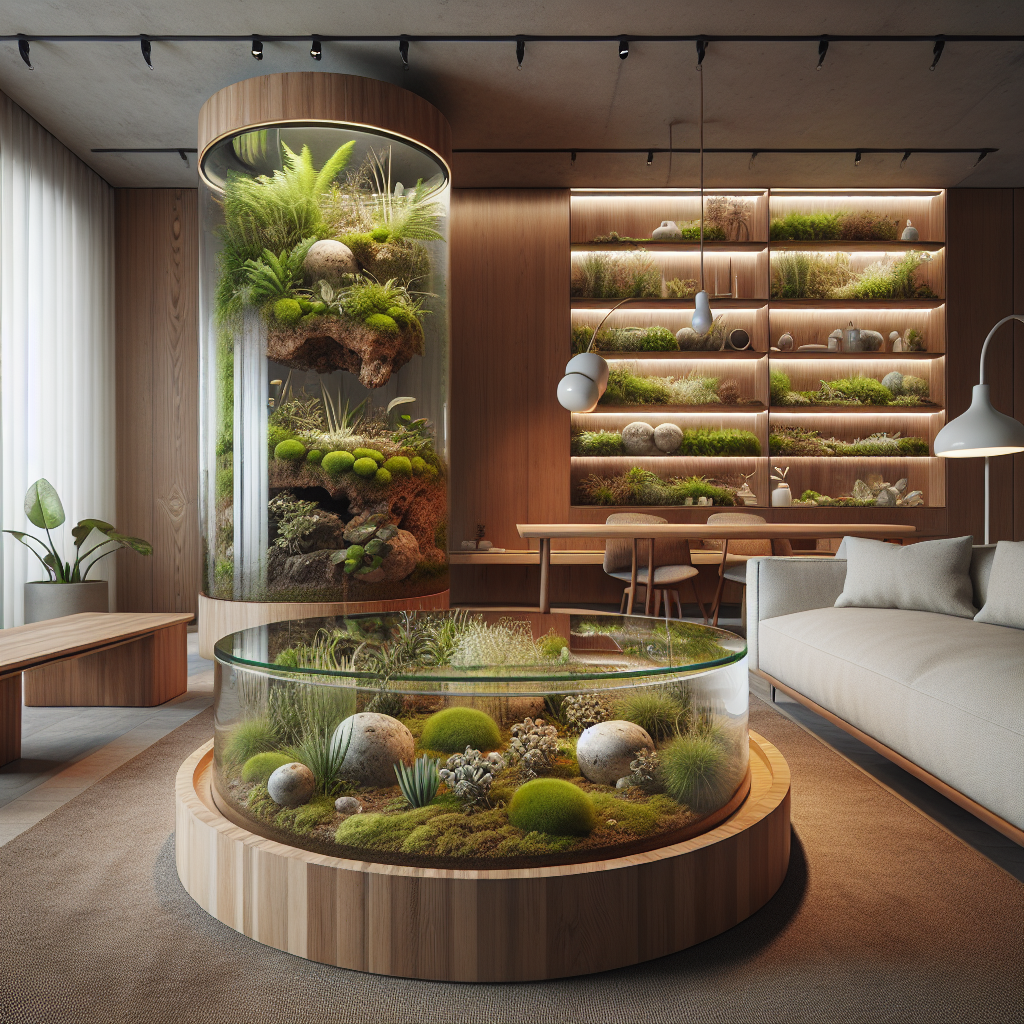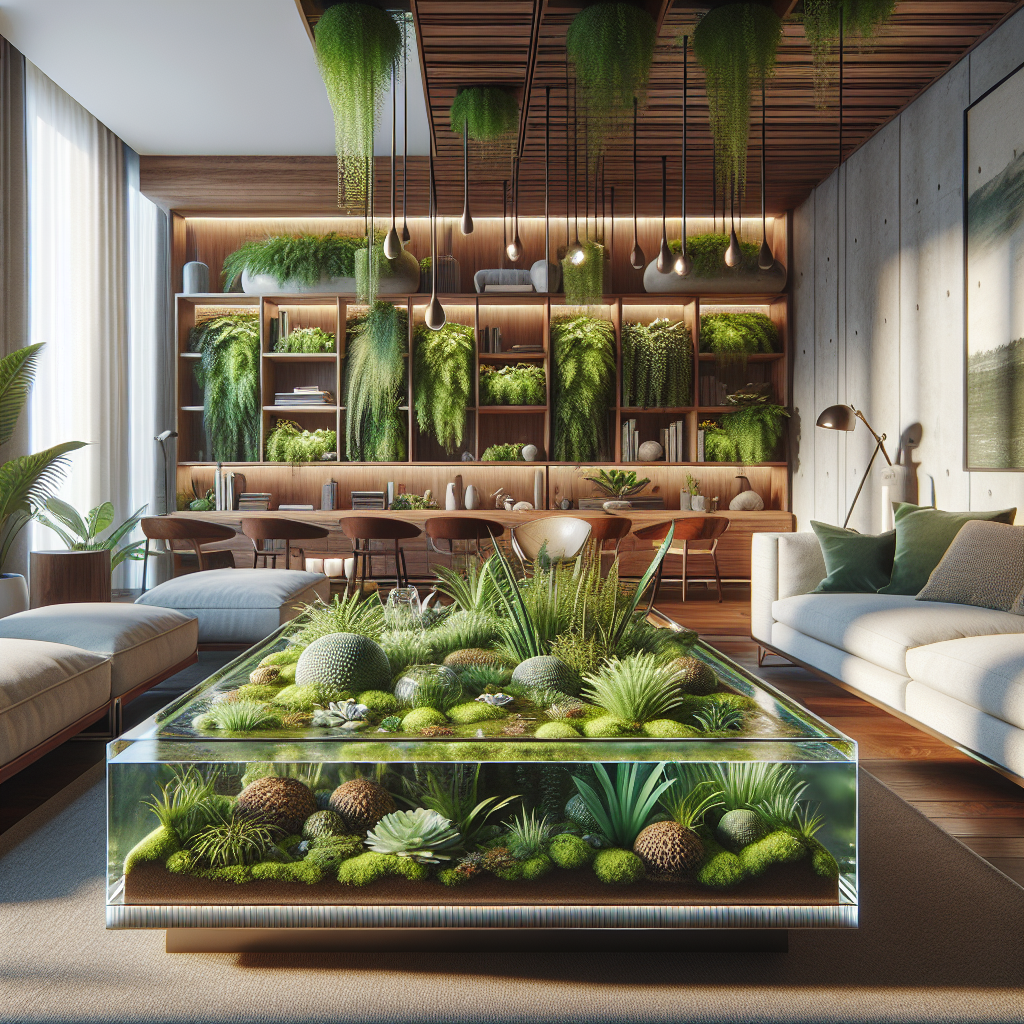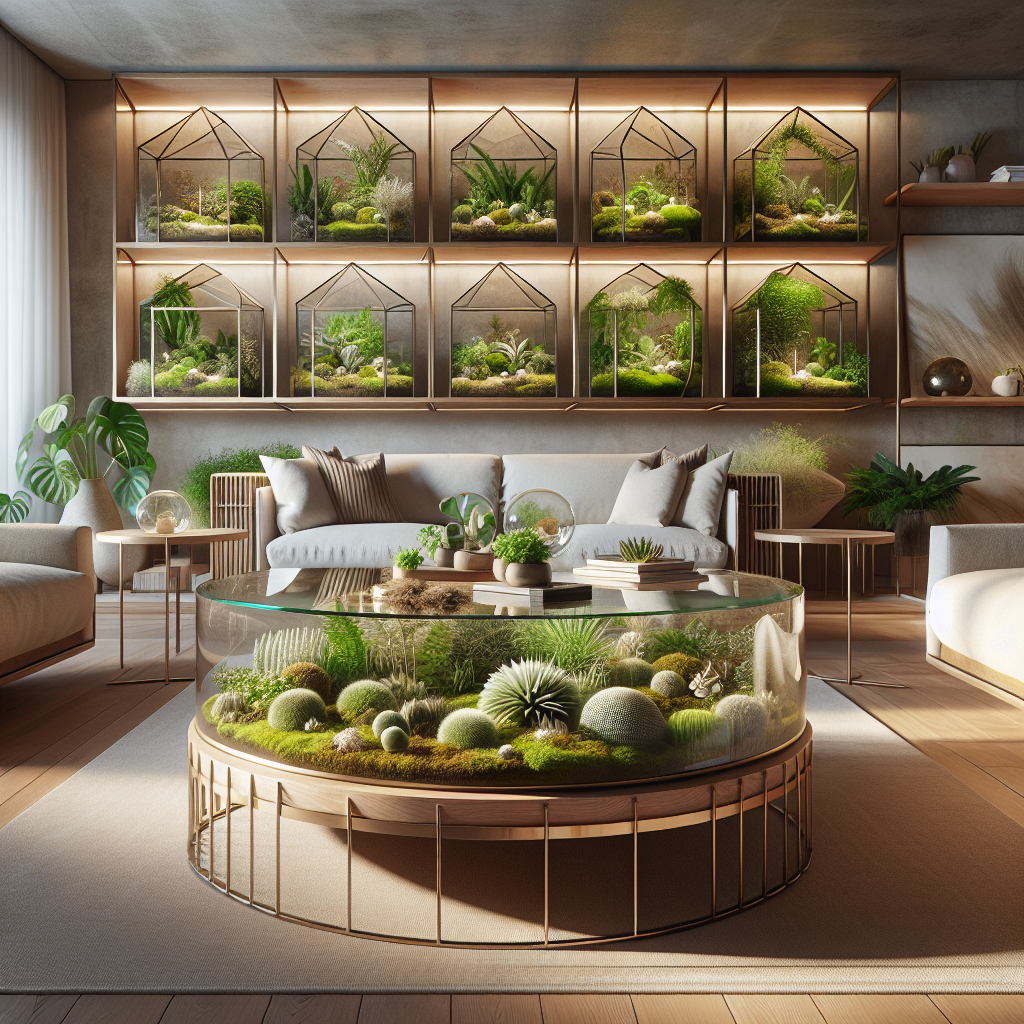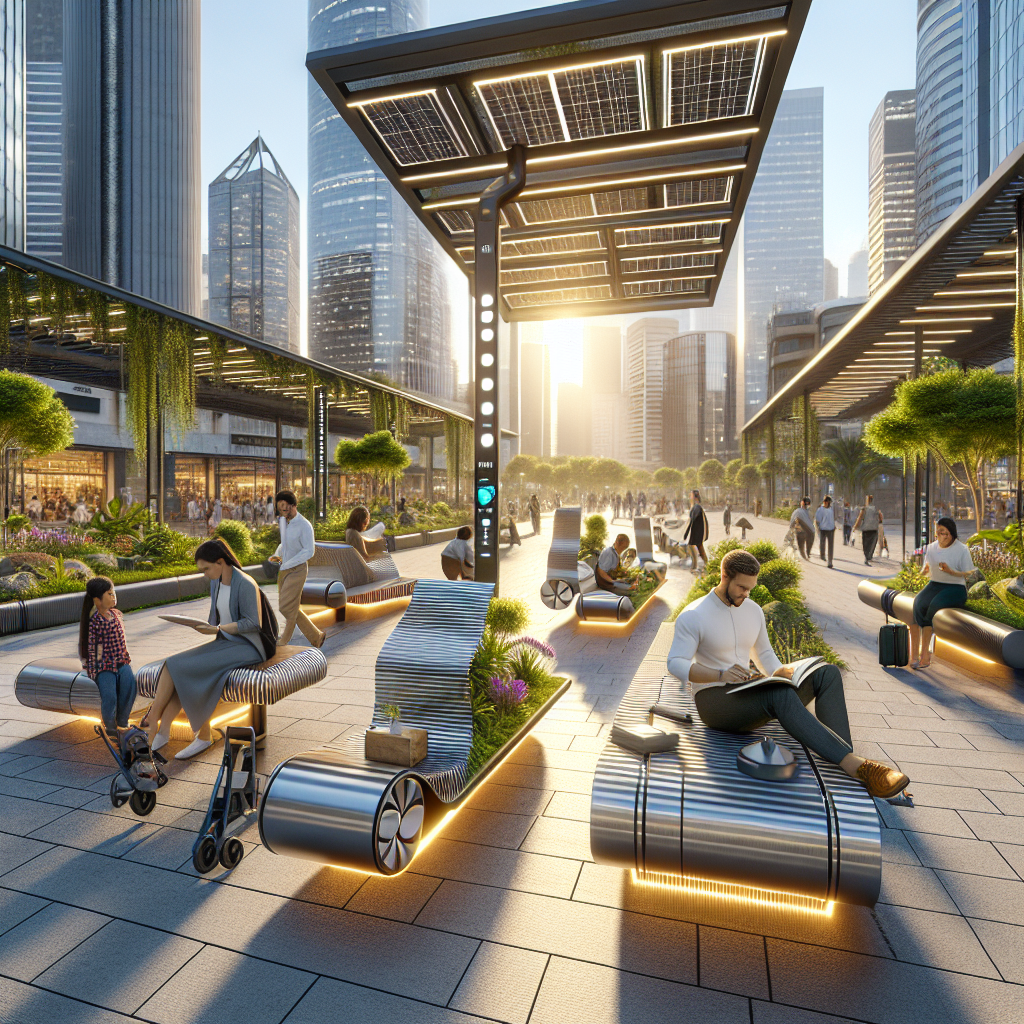Tabletop ecosystems micro terrariums integrated into daily furnishings

Tabletop Ecosystems: Micro Terrariums Integrated into Daily Furnishings
In an era where biophilic design is no longer a luxury but a necessity, the integration of micro terrariums into everyday furnishings is redefining interior spaces. These self-sustaining ecosystems bring a slice of nature into our homes and offices, seamlessly blending aesthetics with functionality. As urban dwellers seek respite from concrete jungles, these miniature green worlds offer a tangible connection to nature without demanding extensive maintenance.
The Rise of Biophilic Interiors
The concept of biophilic design has gained momentum in recent years, with architects and designers emphasizing the need for natural elements in built environments. Studies suggest that incorporating greenery into interiors enhances well-being, reduces stress, and improves air quality. The trend has manifested in various forms, from green walls to vertical gardens, but micro terrariums take this philosophy a step further by embedding nature directly into furniture.
Micro Terrariums: A Fusion of Nature and Design
Unlike traditional potted plants, micro terrariums are self-contained ecosystems that require minimal upkeep. These glass-enclosed environments, often featuring moss, ferns, and succulents, thrive with little intervention. Designers are now incorporating them into coffee tables, bookshelves, and even kitchen countertops, creating living furniture that evolves over time.
One striking example is the terrarium coffee table, where a transparent glass surface reveals a lush, miniature landscape beneath. These tables not only serve as conversation starters but also introduce an organic, ever-changing element to living spaces. Similarly, shelving units with built-in terrariums transform static storage solutions into dynamic, living installations.
The Science Behind Self-Sustaining Ecosystems
Micro terrariums operate on a simple yet fascinating principle: the water cycle. Moisture within the enclosed environment evaporates, condenses on the glass, and trickles back down to nourish the plants. This closed-loop system mimics natural ecosystems, reducing the need for frequent watering. Some designs even incorporate activated charcoal layers to filter impurities, ensuring a balanced microclimate.
Beyond aesthetics, these ecosystems contribute to indoor air purification. Plants absorb carbon dioxide and release oxygen, while certain species, such as ferns and mosses, can filter airborne toxins. This aligns with the broader movement towards sustainable architecture, where nature is not merely an accessory but an integral component of design.
Innovative Applications in Modern Interiors
The versatility of micro terrariums allows them to be integrated into various furniture pieces, from work desks to dining tables. In office environments, where sterile, artificial lighting often dominates, these living installations provide a much-needed touch of greenery. Some designers have even experimented with illuminated terrariums, where LED lighting enhances the visual appeal while supporting plant growth.
Another intriguing application is in kitchen countertops. Imagine a workspace where fresh herbs grow within arm’s reach, encased in a sleek, glass-covered recess. This not only enhances culinary experiences but also promotes sustainability by reducing the need for store-bought herbs.
Challenges and Considerations
Despite their appeal, integrating micro terrariums into furniture comes with challenges. Maintaining the right humidity levels is crucial, as excessive moisture can lead to mold growth. Designers must also consider material compatibility, ensuring that wooden surfaces are adequately sealed to prevent water damage.
Additionally, selecting the right plant species is essential. Low-maintenance varieties such as moss, air plants, and succulents thrive in enclosed environments, whereas high-maintenance species may struggle. Advances in sustainable design are addressing these concerns, with some companies developing smart terrariums equipped with sensors to monitor temperature and humidity.
The Future of Living Furniture
As urbanization continues to rise, the demand for nature-integrated interiors will only grow. The fusion of technology and biophilic design is paving the way for intelligent furniture that not only enhances aesthetics but also contributes to well-being. Imagine a future where dining tables double as hydroponic gardens or office desks feature built-in air-purifying moss panels.
Incorporating micro terrariums into daily furnishings is more than a design trend—it’s a reflection of our evolving relationship with nature. By bringing ecosystems into our homes, we blur the boundaries between the built environment and the natural world, fostering a deeper appreciation for the delicate balance of life.
For those seeking to embrace this movement, the possibilities are endless. Whether through a statement coffee table or a discreet shelf installation, these living elements invite us to slow down, observe, and reconnect with the organic beauty that surrounds us.








